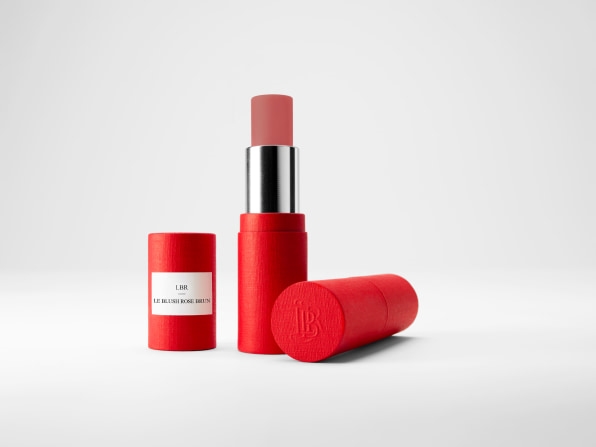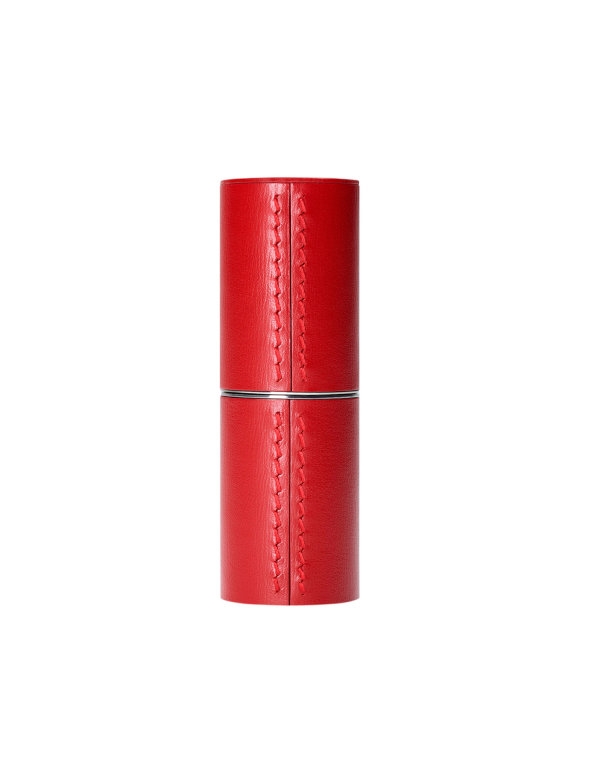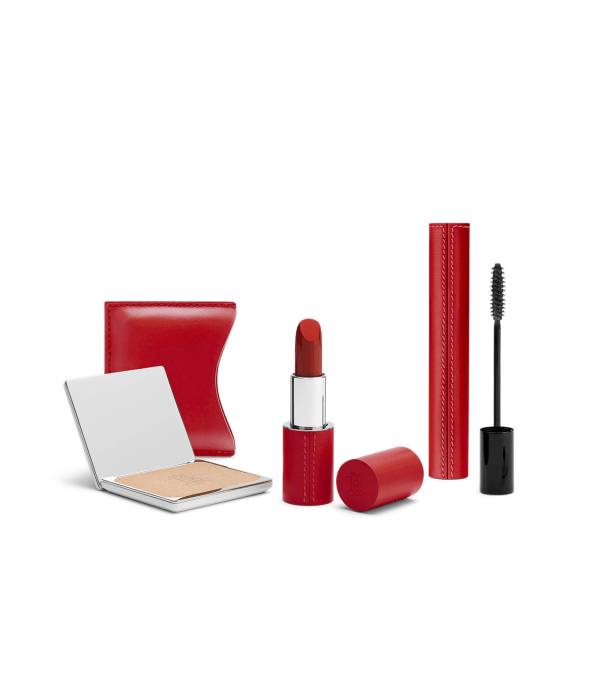Your lipstick is full of plastic. This Parisian startup is putting an end to that
You know about the plastic in water bottles, grocery bags, and clothing. But did you know your lipstick is full of plastic? It’s everywhere from the microplastics in the formula to the tube.
La Bouche Rouge, a Paris-based luxury startup, debuted five years ago as the world’s first plastic-free lipstick brand. At launch, it had eradicated microplastic as an ingredient, but the brand’s tubes still had a small piece of plastic inside them. Now La Bouche Rouge has eradicated this last bit of plastic, and has just released a line of other products—including blush, highlighter, and lip gloss—that fits within its modular system. The brand’s complex design process illustrates how hard it is to get plastic out of the beauty industry and suggests a path forward for other brands that are eager to become more sustainable.

Nicolas Gerlier founded La Bouche Rouge in 2017, after a career working at France’s top beauty houses, including L’Oreal, Armani, and Lancôme. He remembers visiting a lab one day and seeing enormous quantities of plastic caps used to squeeze lipsticks into tubes. Plastic is ubiquitous in the industry because it is inexpensive and easy to mold into the shapes required to dispense makeup.
“That images haunted me,” he says. “We know there is plastic in makeup packaging, but even behind the scenes there is plastic. It’s in the labs, inside the makeup, everywhere.”
The packaging worried him, as stories about the global plastic pollution crisis hit the headlines. But then he began to worry about the microplastics inside the beauty formulas. The vast majority of brands include polyethylene–a tiny particle of plastic–in their formulations to make the lipstick go on more smoothly and stay on longer. New research reveals that humans are ingesting microplastics, and this has a negative impact on their health. “Lipstick goes on your mouth, so you are eating plastic every time you wear it,” Gerlier says. “It’s harming our bodies.”
All of this led Gerlier to strike out on his own. In 2012, he built his own lab in Paris to try to develop long-lasting lipstick formulas that did not include any plastic ingredients. He hired scientists and experts he had encountered over the years from his experience in the industry—including an executive from the luxury conglomerate LVMH—to work on this project.
La Bouche Rouge is part of a wave of brands focused on removing ingredients known to cause harm from beauty formulations. Here in the U.S., brands like Beautycounter and Ilia are on a similar mission. But Gerlier wanted to go beyond the formula alone, and create packaging that was entirely plastic-free. This is a complicated proposition, he says, because most beauty brands work with suppliers who have expertise in creating makeup tubes and bottles, all of which rely heavily on plastic in their production lines.

Gerlier realized he would have to design a makeup tube in house. He hired packaging experts, and they set out to design an entirely plastic-free makeup system. They came up with a two part system. You buy a $80 refillable case, meant to be used forever, made from leather scraps sourced from Tanneries du Puy, a tannery owned by Hermès. The lipstick, which costs $40 to purchase separately, comes in a cardboard tube and has a metal base that clicks into the leather case. When you’re done with the lipstick, you can throw the metal base into the recycling bin, and buy a new lipstick to click into the leather case.
(Gerlier says that you don’t technically need the leather case to use this system. The cardboard packaging is designed to be used to dispense the lipstick, if you choose. But upon testing I found this paper tube flimsy, and the experience was much better when you use the case.)

La Bouche Rouge launched with this system, but there was a catch: The twisting mechanism at the base of the lipstick was still made of plastic. It took another two years for Gerlier and his team to replace the plastic piece with a metal component that would effectively allow the makeup to twist up. Now, Gerlier says that the brand has completely eradicated plastic from the packaging. While there are now other brands with refillable lipsticks, including Hermes and Charlotte Tilbury, La Bouche Rouge is the only one that doesn’t use any plastic.
At $40, the lipstick on its own is on par with other luxury lipsticks from Chanel and Armani. The leather tubes are rather more pricey at $80. But he believes that creating a beautiful, durable leather case will invite customers to think differently about lipstick. “For some people, the case will be an everyday purchase, but for others, it may be a Christmas present,” he says, pointing out that you can add your initials to the case for $10, to make it even more special. “Our goal was to create a beautiful object that we hope the customer really cherishes. After all, what’s the point of creating a case designed to last forever if the customer doesn’t think of it as precious?”
This month, La Bouche Rouge is expanding the product line based on this modular system. The brand has just launched highlighters and blush that all come in stick form in a similar shape as the lipstick, so they can click into the leather cases. But Gerlier is also challenging his team to develop other products that are equally plastic free. It has just launched a mascara in a glass bottle with a metal cap that is entirely recyclable. “You can throw it in the recycling bin along with your wine at the end of the weekend,” he says.
Gerlier hopes his efforts inspire the bigger players in the beauty industry to redesign their packaging, particularly brands that make mass market products. And ultimately, he believes that beauty brands will be compelled to do so by the government, because there are now several laws going into effect in the European Union banning single use plastics by 2024. For now, they apply to things like Q-tips, wet wipes, and clear plastic wrapping, but experts believe the ban will eventually encompass many beauty products. “It’s just a matter of time before they these laws come for the beauty industry,” he says.
(59)


